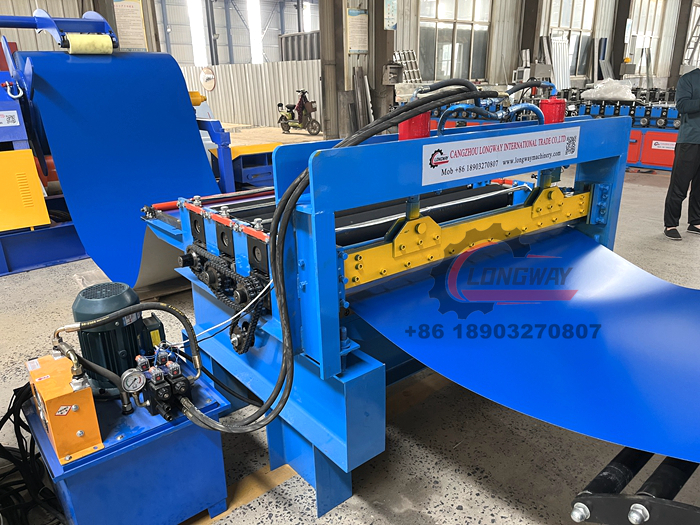Door Frame Rolling Machine Manufacturing Equipment for Efficient Production
The Essential Role of Door Frame Roll Forming Machines in Modern Manufacturing
In the realm of modern manufacturing, efficiency and precision are of paramount importance. One area that has seen significant advancements is the production of door frames, a crucial element in various construction and architectural projects. Door frame roll forming machines have emerged as essential equipment in factories, significantly enhancing the production process and ensuring high-quality products.
Understanding Door Frame Roll Forming Machines
A door frame roll forming machine is designed to create door frames from flat metal sheets through a continuous bending process. This machine operates by feeding raw metal strips into a series of rollers that gradually shape the strips into the desired profile. The process is known for its ability to produce uniform and high-strength door frames that are essential for both residential and commercial applications.
The key advantage of using a roll forming machine lies in its ability to produce large quantities of door frames with minimal waste. The process is highly efficient, as it transforms metal sheets into finished products through a series of precise, automated steps. Factory workers can focus on other critical tasks while the machines handle the bulk of production, leading to improved productivity and reduced labor costs.
Benefits of Using Roll Forming Machines
1. Cost Efficiency One of the most significant benefits of door frame roll forming machines is their cost efficiency. Once set up, these machines can operate continuously, producing door frames at a much lower cost compared to other manufacturing methods. Furthermore, the reduction in material waste means that manufacturers can save on raw materials, leading to an overall decrease in production costs.
door frame roll forming machine factory

2. High Precision and Consistency Precision is crucial when it comes to construction materials. Roll forming machines are engineered to operate within tight tolerances, ensuring that each door frame produced is consistent in size and shape. This high level of accuracy minimizes the need for subsequent adjustments or rework, which can be time-consuming and costly.
3. Customization The versatility of roll forming machines allows manufacturers to create a wide variety of door frame designs. Whether it’s standard dimensions or custom shapes, the machines can be adjusted to meet specific requirements. This flexibility enables factories to cater to different client needs and market demands, ultimately leading to greater customer satisfaction.
4. Durability and Strength Door frames need to withstand various environmental conditions and stresses. The materials used in roll forming, coupled with the design capabilities of the machines, result in strong and durable frames. This quality assurance is vital for many applications, from residential homes to industrial buildings.
Conclusion
The advancements in door frame roll forming machines signify a significant leap in manufacturing processes. With their ability to produce cost-effective, precise, and durable products, these machines have transformed the way door frames are manufactured. As the demand for high-quality door frames continues to rise, investing in advanced roll forming technology will undoubtedly provide manufacturers with a competitive edge in the industry.
In conclusion, as factories around the world continue to adopt door frame roll forming machines, they are poised to redefine standards in manufacturing. The focus on efficiency, customization, and quality will not only enhance productivity in the short term but will also solidify the long-term viability of manufacturers in an increasingly competitive market. Investing in such technology is not just a step forward; it’s a leap into the future of manufacturing.
-
Roof Panel Machines: Buying Guide, Types, and PricingNewsJul.04, 2025
-
Purlin Machines: Types, Features, and Pricing GuideNewsJul.04, 2025
-
Metal Embossing Machines: Types, Applications, and Buying GuideNewsJul.04, 2025
-
Gutter Machines: Features, Types, and Cost BreakdownNewsJul.04, 2025
-
Cut to Length Line: Overview, Equipment, and Buying GuideNewsJul.04, 2025
-
Auto Stacker: Features, Applications, and Cost BreakdownNewsJul.04, 2025
-
Top Drywall Profile Machine Models for SaleNewsJun.05, 2025








